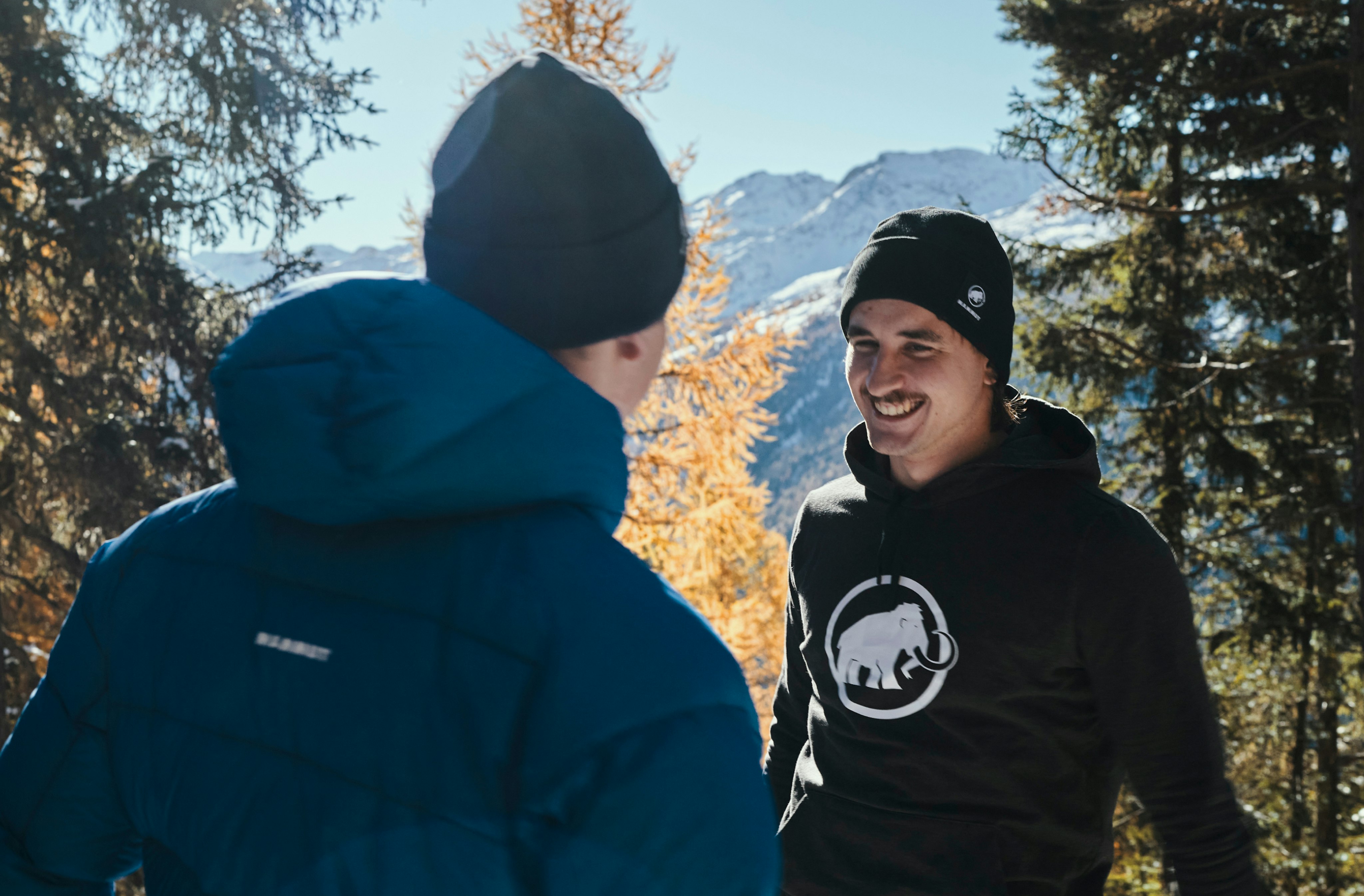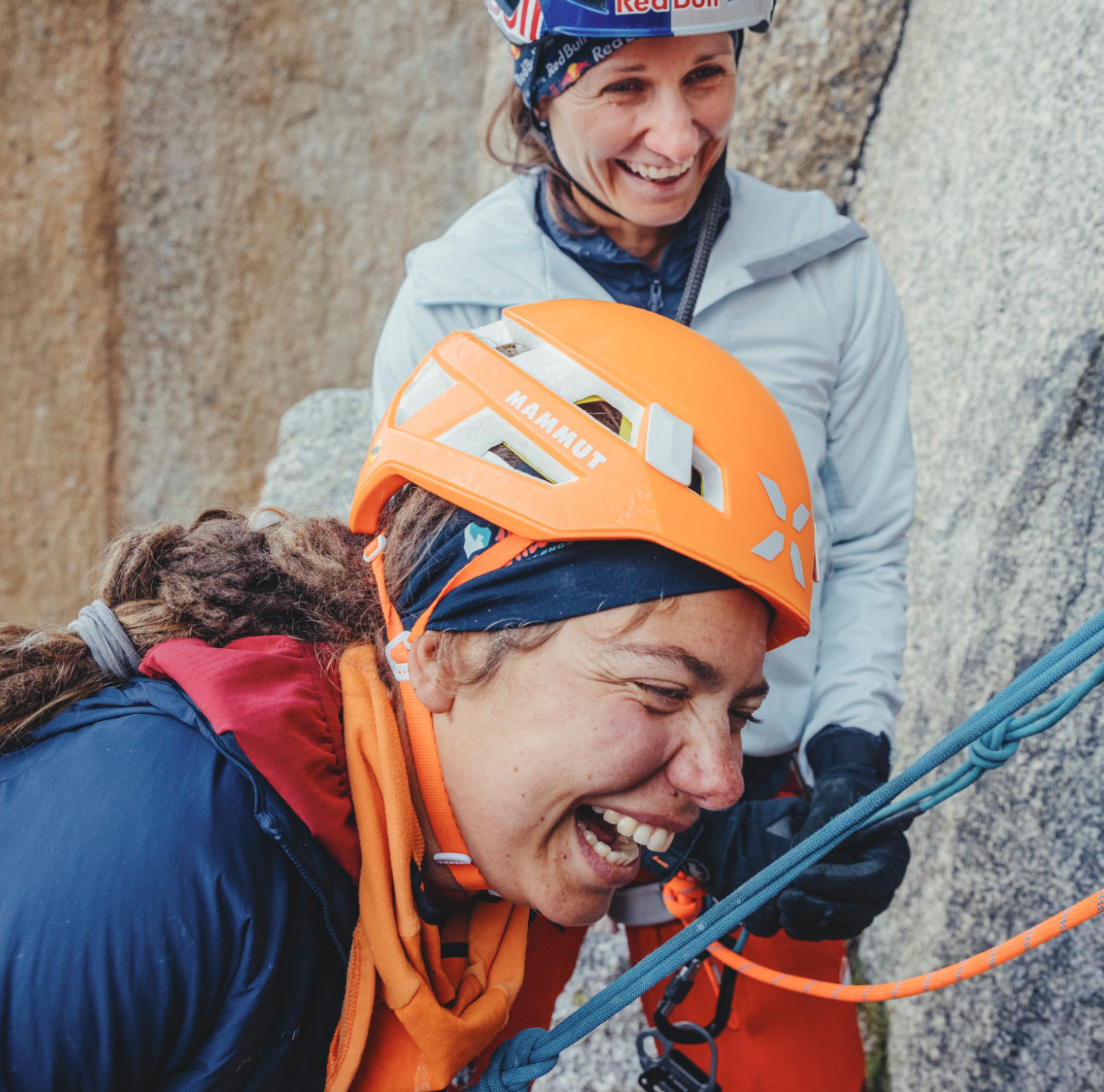Heitz and Anthamatten on partnership and risk
02/2022
@Jeremy Bernard
Jeremy Bernard
Alex Phillips
Jérémie Heitz and Sam Anthamatten are known for pushing the envelope of what is possible. While their skiing is on another level, we wanted to learn about something we can all relate to: relationships, risk assessment and good times in the mountains.
After over a decade of competitive and expedition big mountain skiing, Jérémie Heitz and Sam Anthamatten know exactly how high the stakes are. On their groundbreaking project La Liste, which has spanned from skiing 4,000 meter summits in Switzerland to 6,000 meter peaks in Pakistan, they have faced challenging high-alpine snowpacks, remote wilderness rescues in Peru and the omnipresent question: What’s the limit? We chatted about the universal lessons they’ve learned about mountain travel and how they navigate their role as leaders in the big mountain skiing community.
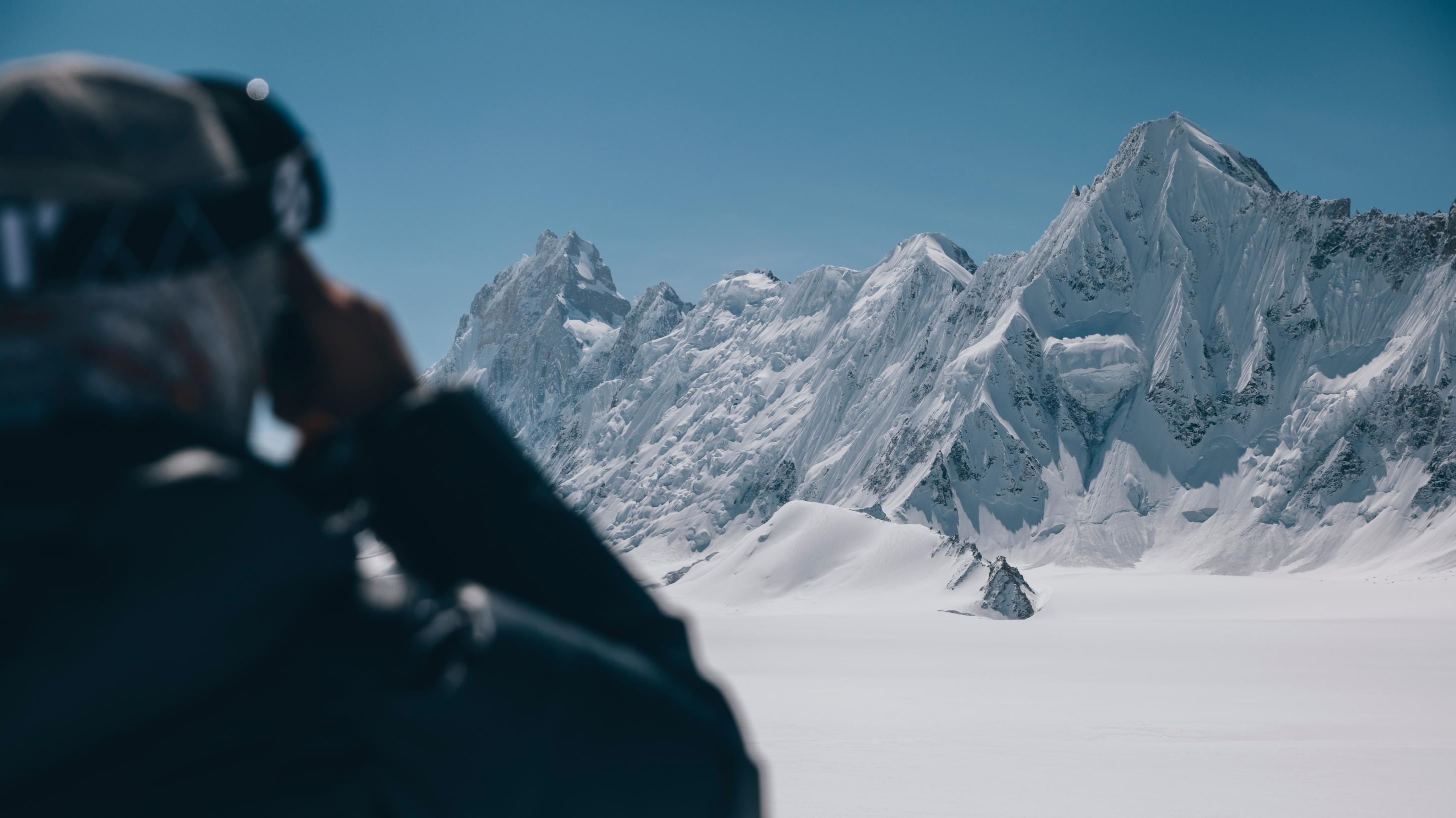
How long did it take you to develop the partnership you have today?
Jérémie: It takes quite a bit. We’ve skied together 12 years now, and it's been a natural process. We met during our first competitions around 2010, and then we were both on the Freeride World Tour, we traveled together, are both from Switzerland… but most importantly, we had the same idea of skiing outside of competition. That’s hugely helpful in creating something together, not to mention he’s a great guy to hang out with. When I had the idea for La Liste, he was the perfect partner. There’s not many people around that I could do this with.
Sam: As Jérémie says, it really takes a long time. We’ve experienced so much together, and it’s really a partnership that you build - you can’t have it from one day to the next. When I’m out in the mountains with other people, I have to talk so much more. With Jérémie, we can look at each other and we know what the decision is going to be. Knowing you have someone who understands you and will support your decisions makes the mountains - which are already so difficult to predict - a much easier and more enjoyable playground. It’s really special.
“I respect that it’s harder to turn around if you don’t have as much time in the mountains as we do.”
How do you bring up insecurities about a line or project with each other?
Sam: The process is super straight forward. As soon as you see something you don’t like, you address it. There’s no tiptoeing around it, and that creates a really cool, open conversation environment. It helps you make the right decisions.
Jérémie: That doesn't always mean it’s fun though. For La Liste, when I made the decision to turn around on a line for example, it was a big deal. It was such a huge objective and I felt like I was going to regret it. But looking back, there was no question. I was being honest with myself about where I was that day. With that said, I was building off years of experience to make that decision. I think it would have been harder for someone younger to come to the same conclusion. Sometimes I think about how it would be if I only had weekends. I respect that it’s harder to turn around if you don’t have as much time in the mountains as we do. It’s easier for us to wait for conditions to improve.
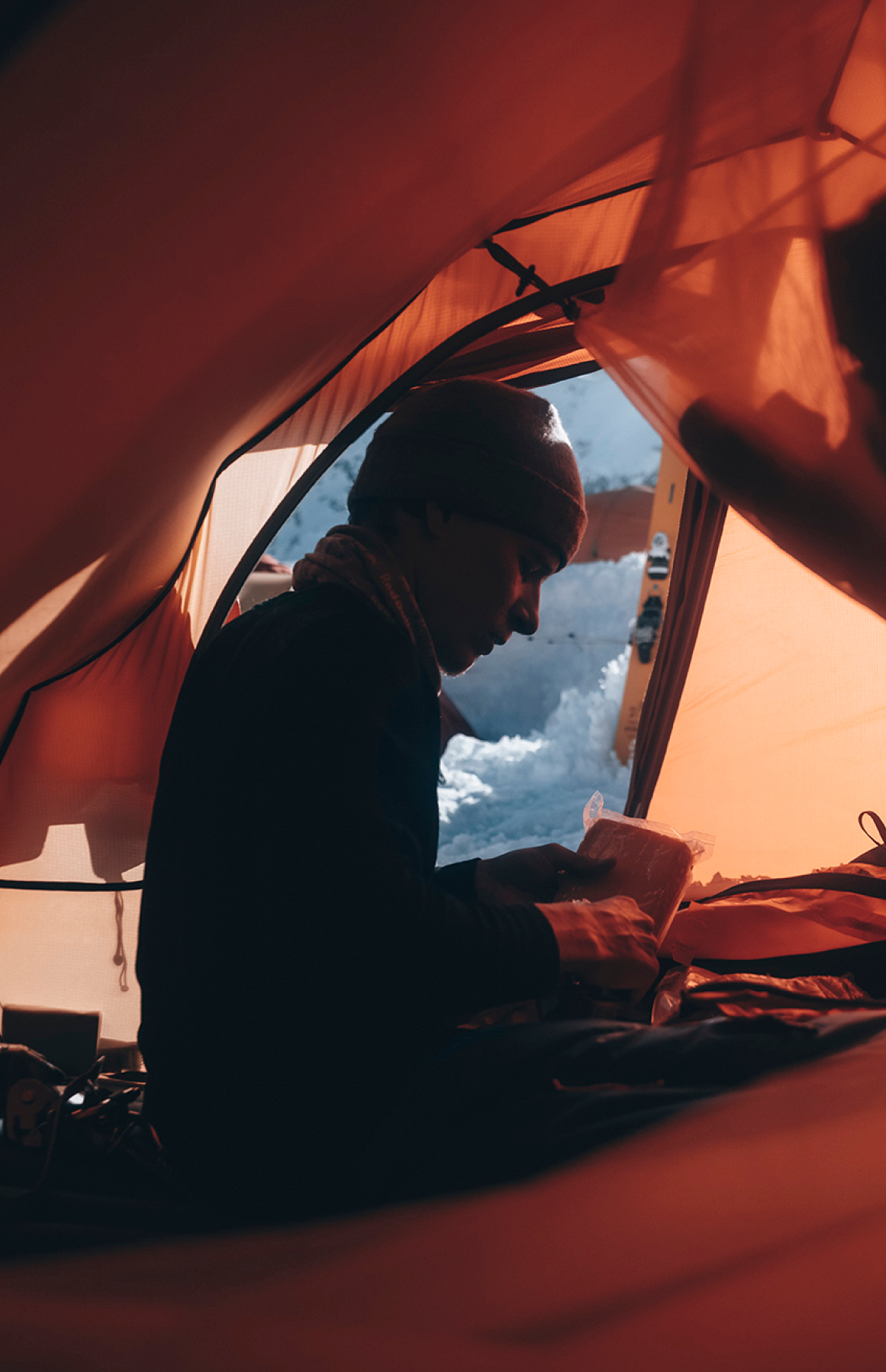
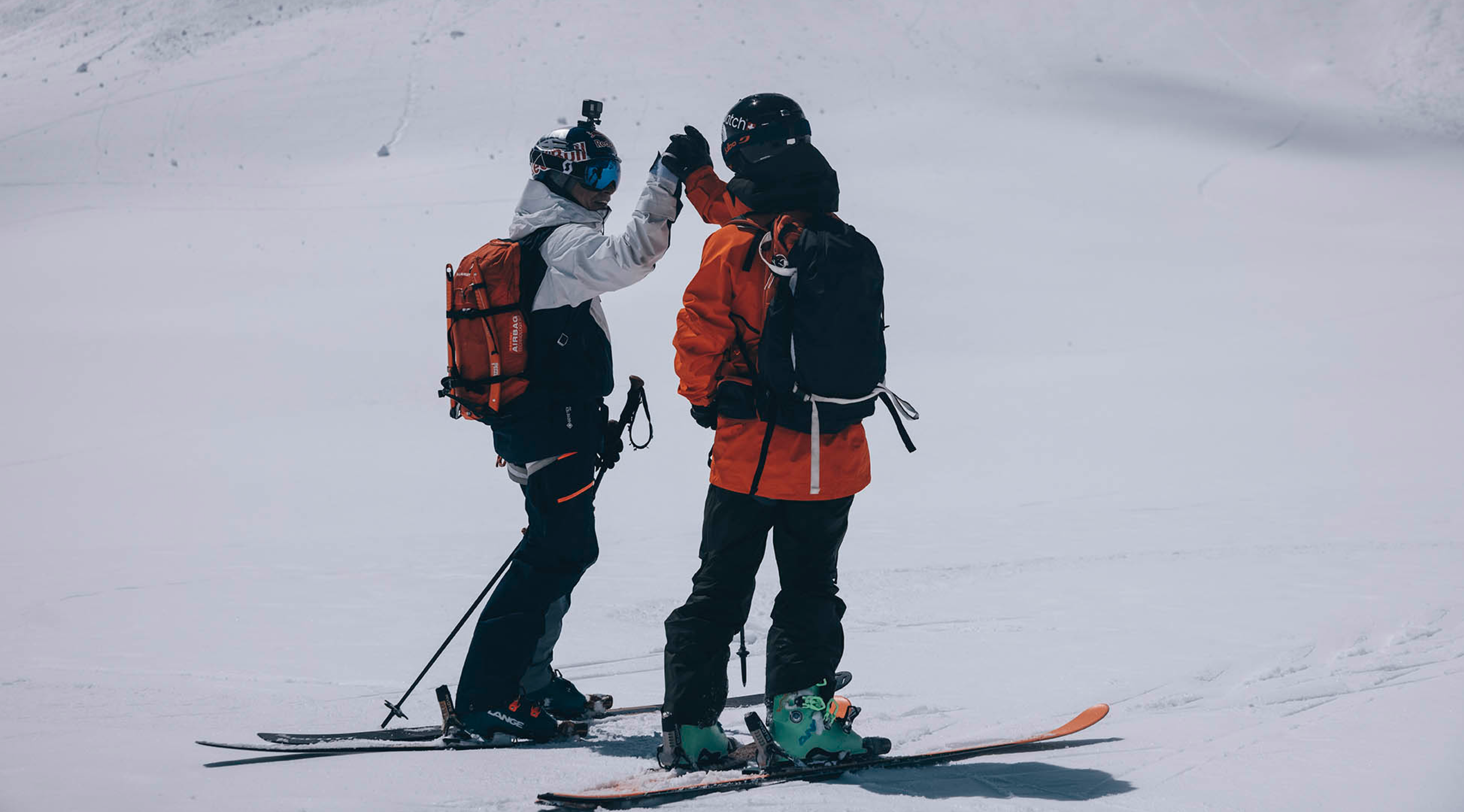
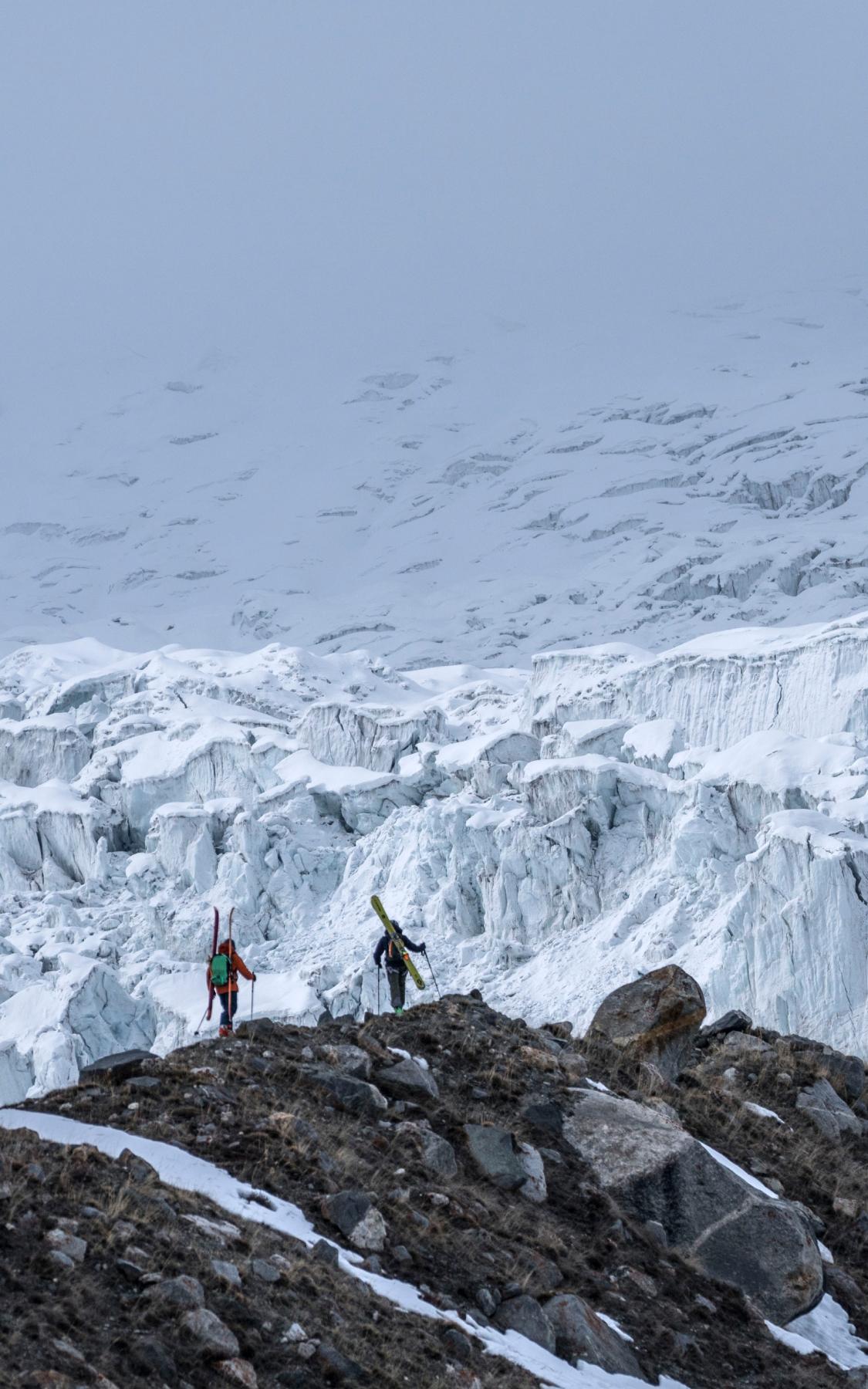
PHOTO TAKEN BY @LUCA ROLLI
What do you see as major red flags or danger factors in the mountains?
Jérémie: The human factor.
Sam: It’s tricky when you have a group that doesn’t know each other very well and they want to show off a bit. If the snow isn’t easy to predict and you’ve got this competitive energy going you might not see the avalanche dangers. With the focus on pushing yourself, it can get to the point that you don’t see a big mistake coming.
Jérémie: That’s something we have to think about when we’re filming and there are so many people involved. It can be a real balance.
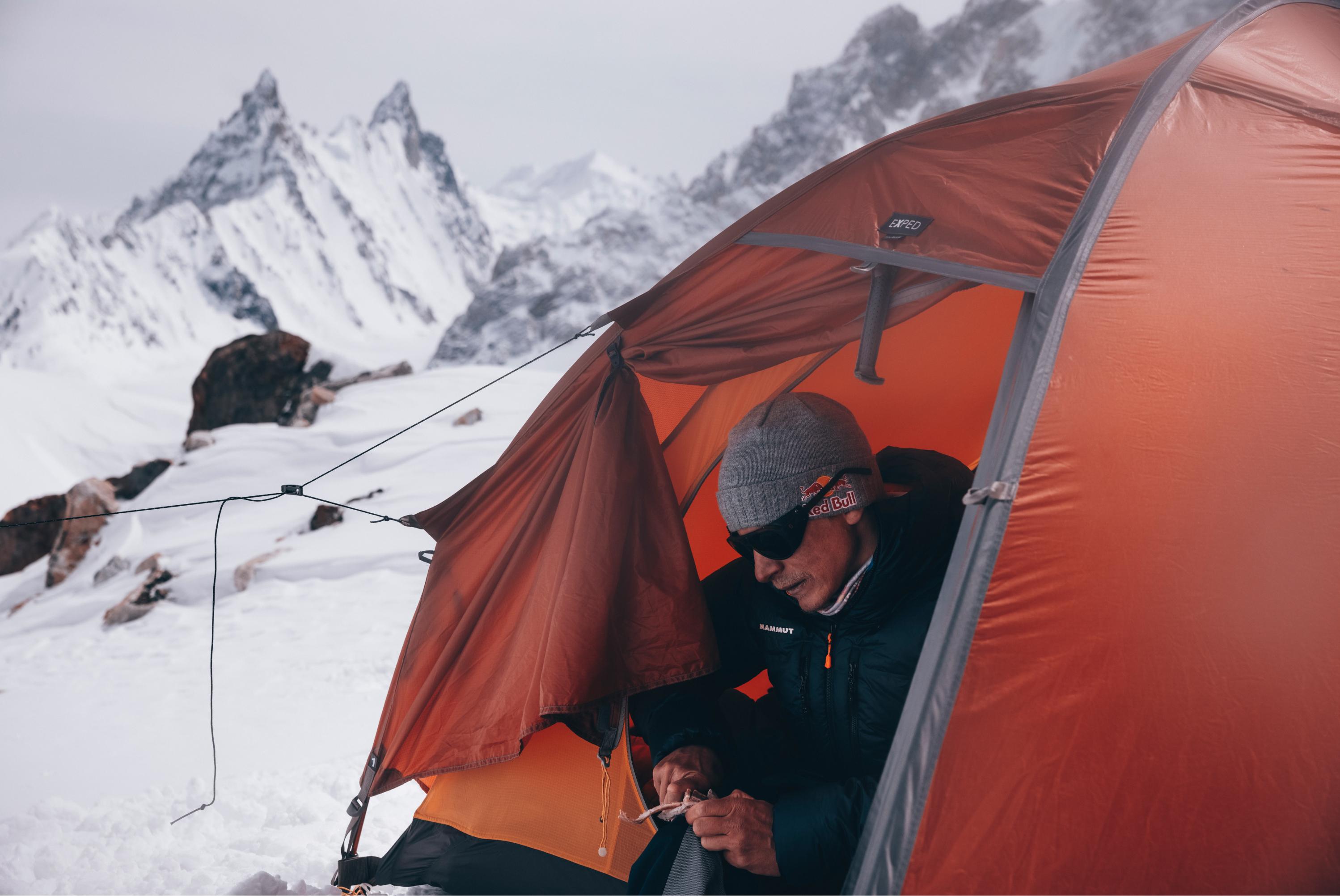
Speaking of filming, can you tell us a bit more about the process of planning an expedition or larger-scale project?
Jérémie: If we’re looking at La Liste in Switzerland, for example, we went on multiple flights to check conditions on the 4,000-meter peaks we wanted to ski, and then really tracked the layers of snow we wanted to ride. The time window is super short, and we had to make sure we got the right conditions. It’s a different process for people who are going out for two days of weekend skiing, but no matter who you are, as soon as you leave the resort, you have to plan ahead. You need to check where you want to hike, where you want to ski... You want to use everything in your toolkit to make it’s a success and to ensure that you can actually ski that day. It’s a lot of effort, but we really like this kind of skiing. It’s why we quit competing. When you plan an expedition from the beginning, starting at home in front of your computer, and finally going for it and having a successful mission... it’s the best.
Sam: If we’re looking at La Liste in Pakistan, we’re talking about five months of planning to ski five lines.
Jérémie: Don’t tell them that, Sammy [laughs].
Sam: But it’s true! That’s the thing; the whole planning process isn’t random. We didn’t just say: “Let’s go to Pakistan.” It took us a year to decide after considering Nepal and India. You spend a lot of time studying and researching what is even possible.
“When you’re aware that you’re not in control of anything, you have to be humble.”
I’d bet a lot of people assume you are overflowing with confidence in the mountains; they might overlook that you do process risk for all of your projects. How do you think we develop an attitude of humility in the mountains while still being ambitious?
Sam: Being humble is really being critical of your decisions all day long. Not criticizing, but really looking at what are you doing.
Jérémie: When you’re aware that you’re not in control of anything, you have to be humble. You just have to make the right decision. You can be the best skier with all the right skills, but if you make the wrong decision, something’s going to happen. No matter your level, you have to be surrounded by people who have perspective and can give you advice. It’s also about being aware that something can happen every time you go.
One thing that’s dangerous for us as professionals is that we get used to doing things that are pushing the limits. You can get comfortable and might not pay as much attention. Yesterday, Sam and I were ice climbing, for example. The danger isn’t necessarily on the climb, but when you rappel down. Put your rope in wrong and it’s game over. Even if it’s something you do every day, you have to be aware. That forces you to be humble.
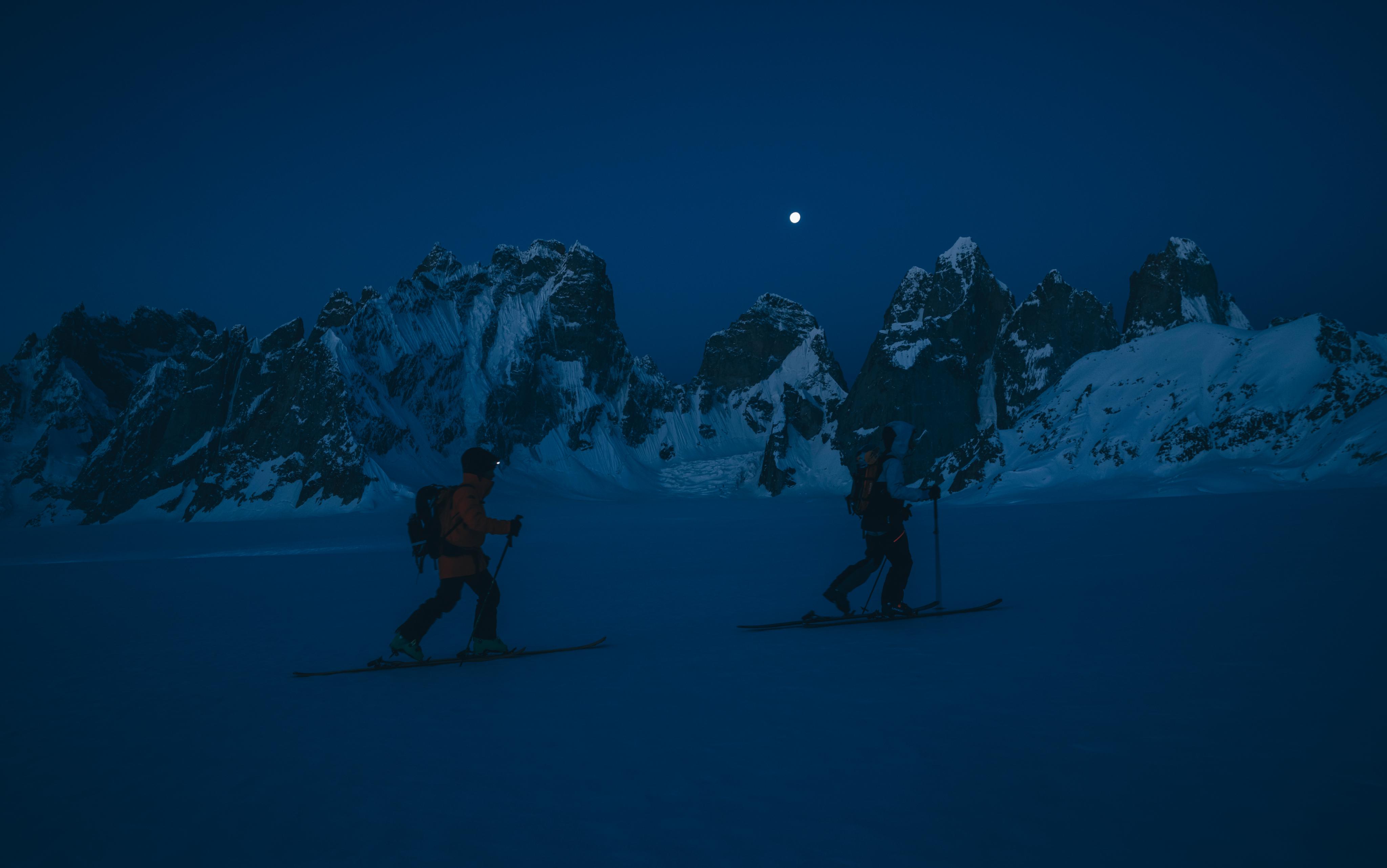
That reminds me of the story of Lynn Hill, one of the world’s most legendary climbers, forgetting to tie her rope. One of the tricky topics for professionals is how to share your stories, while not completely terrifying the younger generation and still giving them a realistic outlook on the sport. What are your thoughts on this?
Sam: We don’t want to tell the next generation not to do things, because we did the same things when we were young. We just went for it. But they should go out with all the tools that exist to keep them as safe as possible. When I started freeriding, I had an old wooden shovel, no beacon…
Jérémie: Wait - how old are you?
Sam: In freeriding today, everyone would say that’s stupid, but we all started somewhere.
Jérémie: I also don’t want to give people the impression that we’ve always been skiing in perfectly safe environments. But I see my younger brother, who has so many more tools and resources available than I did at that age, like guide education and courses with pro riders. I do think we’re going in the right direction, but there is more work to be done to make avalanche safety courses enjoyable and engaging for younger generations.
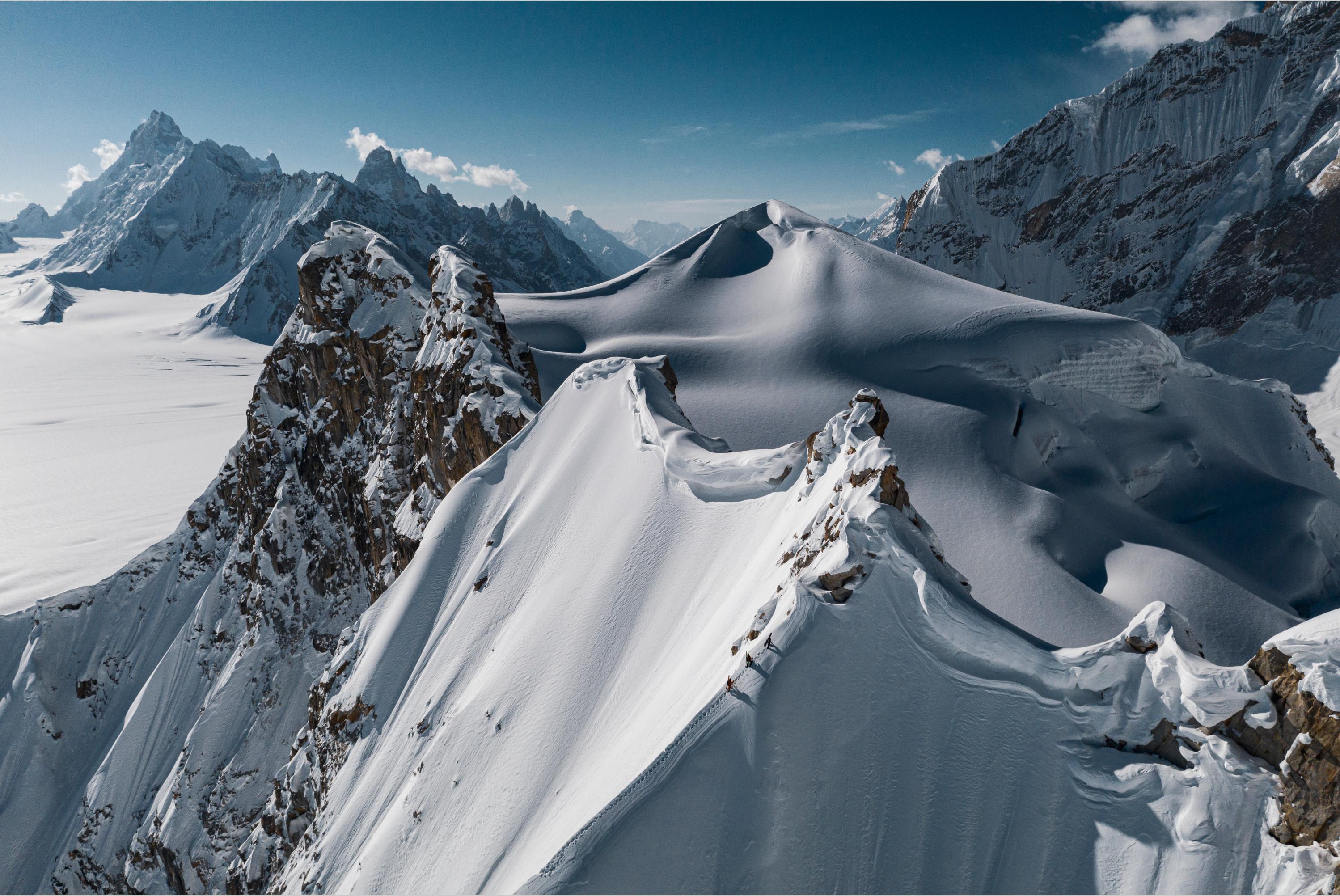
“It’s a bit boring to see everything go perfectly. Watching people trying, even if it’s not possible after all, that’s interesting.”
As part of Aspects Ep. 01 , I talked to Forrest Schorderet about the role of media in avalanche safety and freeride culture. Do you see a shift happening?
Jérémie: These days, I feel like it’s increasingly rare to see pure ski porn. There are a few studios still doing it, but people really want to feel like they are there with you, they want to see how you travelled to Pakistan and what the food was like. It wasn’t always clear to us that we should be this transparent, and it’s something we’ve had to discuss. When the first La Liste was released and you see me falling and loosing a ski, people really enjoyed it. That was what they talked about because it was relatable. It’s a bit boring to see everything go perfectly. Watching people trying, even if it’s not possible after all; that’s interesting.
Sam: Five years ago, we would have had another mindset. We wouldn’t have shown some of the images and stories you see in La Liste: Everything or Nothing. For me as a guide, seeing a line I skied slide after I got to the bottom… That’s not necessarily great for my name but at the end of the day, it’s the honest truth of what happened. And it’s good to talk about. We know people have been inspired by our style of skiing. Jérémie and I feel it’s important to show that it’s not easy and that if something does happen, the consequences can be very high.
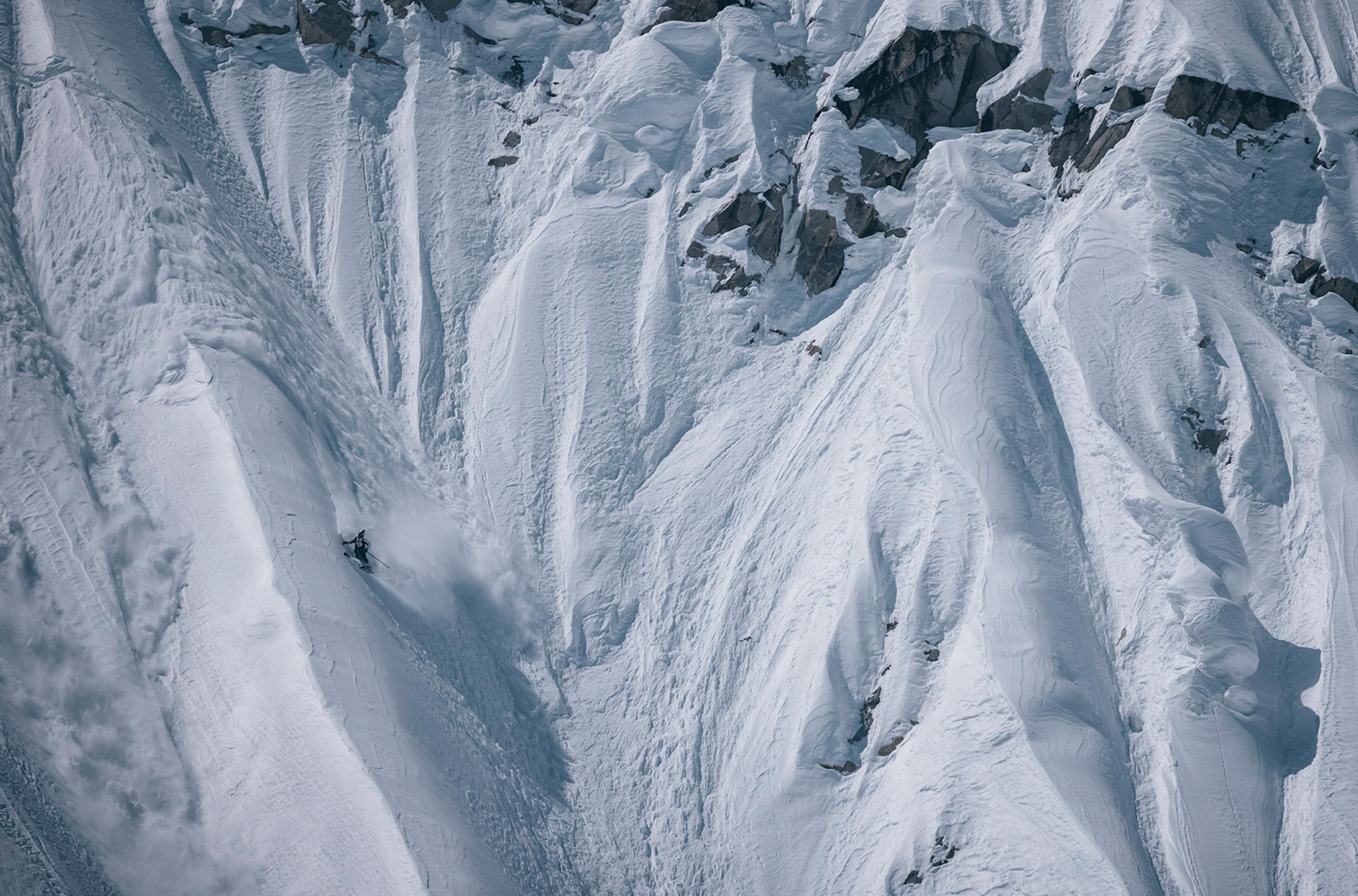
Have you seen the safety culture change since you both started?
Sam: Freeriding has really evolved with all the gear and communication. We have more and more people going off-piste and fewer accidents per capita.
Jérémie: I agree. It’s really noticeable in how we talk about the sport. Having a better probe or shovel because the materials are evolving isn’t the main issue. When you use that equipment, it means an accident already happened. Back in the day, freeriding had a bit of a culture of showing off, but now it really is about education. People are more aware and we as professionals are really trying to step up in what images and ideas we put out there. There are more freeriders now, but if you ask everyone if they have a beacon, probe, shovel and airbag backpack, they do, and they do it because the culture and communication is there.
Your life might not seem comparable to the student or office worker who lives for the few precious weekends on the hill. Despite that, what would you say to someone who planned a trip but when the day arrives, conditions are terrible?
Sam: It’s not always obvious that you should say “no” but what we find helpful is having a plan B. Find something similar but in an environment that is safer and where you can still push yourself. You don’t want to spend the day pushing the limit in the high mountains when you’re scared.
Jérémie: I’d also say dealing with bad weather and poor conditions drove us to get into other sports. We started paragliding. Now, if we want to try something but see conditions aren’t great, we can fly down and go biking in the afternoon. It’s much easier when you have other activities to balance things out and don’t feel as fixated. At the end of the day, we can’t control the weather.
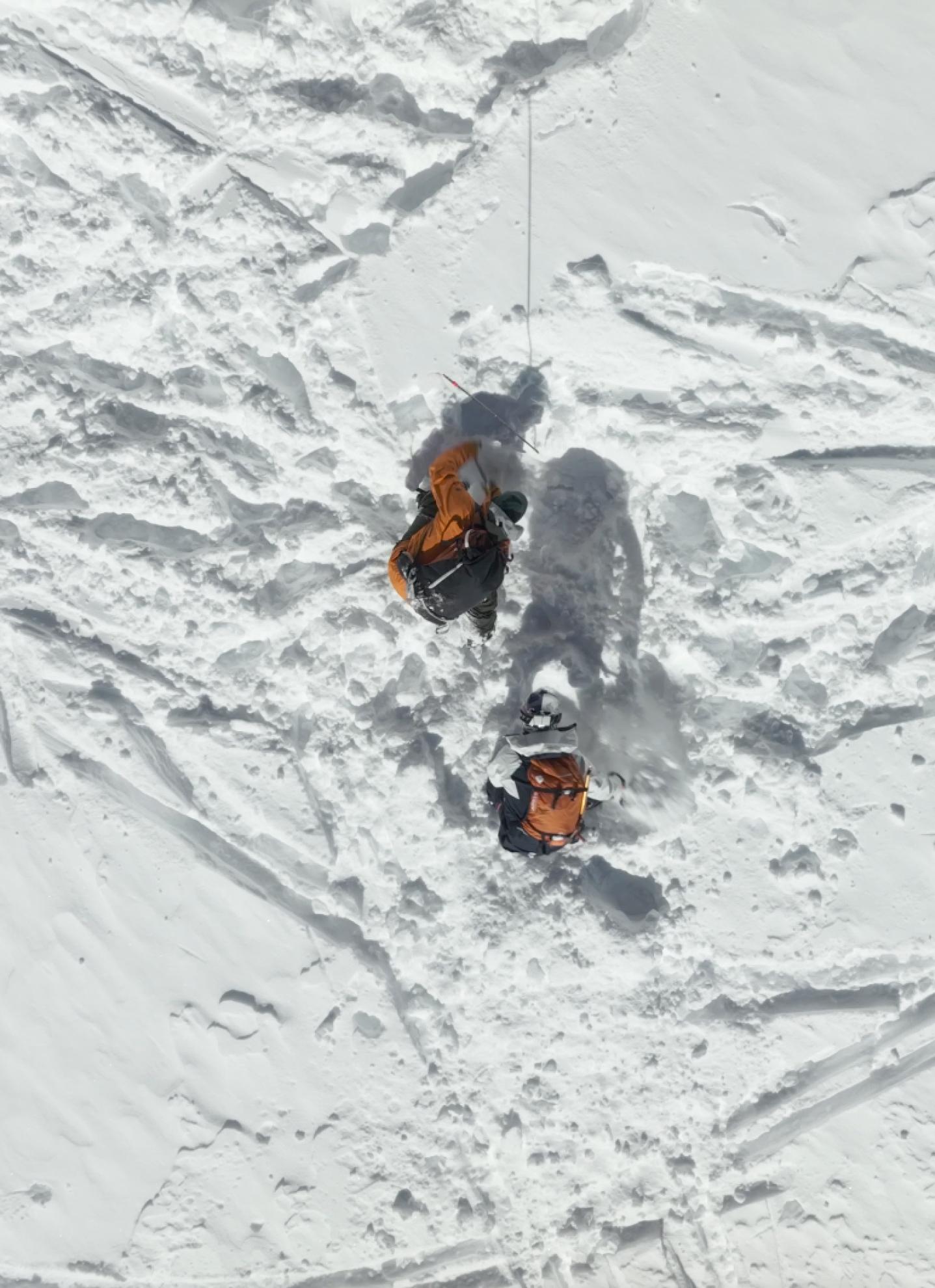
What would be your final piece of advice for the person who loves to ski but can’t get out as often as you two?
Jérémie: Ultimately, you make the final decision of what you’re going to do. But having someone else’s perspective will better inform your judgement. I really listen to that outside feedback and advice from guides and patrollers. Especially if you're travelling to an area, even if it’s just from the city, don’t be afraid to ask the people who live at the mountain what they think.
Sam: It’s a green flag when you don’t have to push too hard. When everything is going against you, then maybe it’s ok to say: “that was a cool day in the mountains but I’m going to take it easy.” There will be those days when everything is just perfectly aligned - the group dynamic, the avalanche bulletin - those are the days to really go for it and create some beautiful memories.
Online Snow Safety Workshop - Watch now
Watch stories from avalanche terrain in Aspects Ep. 01
